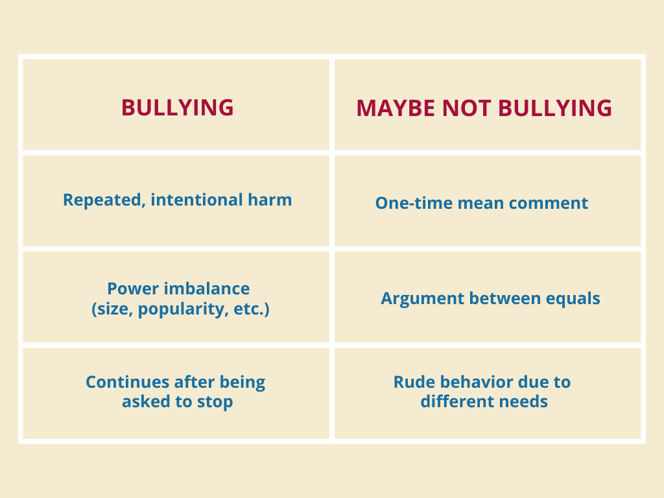Why Routines Still Matter During School Breaks Unstructured time during school breaks — whether winter break, spring break, or summer break — can be a joyful transition from the predictability of the school year into open days with fewer obligations. But...
Back-to-School Mental Health Checklist for Parents

How to support your child’s emotional wellbeing during the summer-to-school transition
Medically reviewed by Nicole Garber, MD, Chief Medical Officer
This comprehensive guide provides parents with 5 essential steps to support their child's mental health during the back-to-school transition, including how to identify anxiety warning signs, establish healthy routines, and maintain open communication with children experiencing school stress.
In this article, you will learn
Why back-to-school mental health matters
It’s hard to believe—it’s time to get the kids ready to return to school. It turns out, these days preparation is more important than ever. Research shows that today’s children are particularly vulnerable during transitions like back-to-school season, but they’re also highly receptive to interventions that help them adjust better and support their mental health. According to the CDC, nearly 1 in 5 children experience a mental, emotional, or behavioral disorder each year, making proactive support crucial during school transitions.
Here are the five steps you can take to support your child in the transition from summer to school.
1. Gradually ease your child back into school routines
The transition from summer's relaxed pace to school's structured environment doesn't have to feel like a splash of cold water. Think of it like slowly easing into the school year, rather than diving straight in. Children thrive when they can anticipate and prepare for changes, and the back-to-school transition is no different.
-
Start the transition 1-2 weeks before school
Begin gradually shifting your family's rhythm toward school schedules by adjusting sleep, wake-up, and meal times. Slowly reintroduce morning routines, add quiet study-like periods such as reading time or puzzles, and establish consistent bedtimes that prepare their bodies for classroom structure. -
Essential end-of-summer conversations
Many parents focus on buying school supplies and new clothes but forget that kids need time to mentally prepare for the social and academic changes ahead. The emotional prep is just as important as the logistical preparation. Go beyond academics by helping children process their feelings about the upcoming year and any lingering concerns from last year—unresolved social conflicts, academic struggles, etc. Kids are already thinking about these issues, so bringing them into the open helps them feel supported rather than alone with their worries.
- Draft an introduction email to the teacher(s)
Send a brief, positive introduction email to your child's teacher(s). This sets a collaborative tone for the year and helps teachers understand who’s entering their classroom.
What to include:
- Share who your child is and what they enjoy
- Mention what has helped them succeed in the past
- Note any challenges they've faced
- Include your contact information and availability
2. Identify back-to-school anxiety warning signs
Back-to-school jitters are expected (mild nervousness about new teacher/grade, occasional “butterflies”), but persistent anxiety, sadness, or behavioral changes may signal that your child needs extra support. In general, keep an eye on the intensity, persistence, and impact of big emotions—the more concerning signs interfere with sleep, eating, or other activities.
Watch for physical and behavioral warning signs of school anxietyWatch for disruptions in fundamental rhythms
- Intense, persistent anxiety affecting daily life
- Frequent physical complaints (stomachaches, headaches)
- Sleep disturbances: difficulty falling asleep, frequent nighttime awakenings
- Bedtime regression: wanting to sleep in parents’ bed
- Dramatic changes in appetite
- Frequent nurse visits during school
“The stomachaches are real. The headaches are real, but they're being caused by stress.”
Download this guide for easy reference or to send to a friend.
When your child exhibits lack of excitement and possible anxiety
It's common for children to express hesitation about returning to school. This doesn't necessarily signal a problem —it may reflect a natural discomfort with change.
- Elementary age (5-10)
- Ask:
“What do you think school will be like this year?”
“What was your favorite part of school last year?” - Say:
“It sounds like you’re feeling worried. That makes sense, a lot of kids feel that way.”
“Even grown-ups feel nervous about new things.” - Do: Visit the school playground, read books about school starting, create a visual schedule
- Ask:
- Middle school age (11-13)
- Ask:
“What’s been on your mind about school?”
“What would help you feel more confident?”
- Ask:
-
- Say:
“Middle school pressure is real. It’s totally understandable that you’re not excited yet.”
“Want to talk through it, or just have me listen?” - Do: Let them choose school supplies, help reconnect with friends
- Say:
- High school age (14-18)
- Ask:
“How are you feeling about the year ahead?”
“How can I support you this year?”
- Ask:
-
- Say:
“I noticed you seem less than thrilled about school starting. I’m here if you want to talk about it.”
“What would make this school year feel more manageable for you?” - Do: Give them space while staying available, help organize their schedule
- Say:
3. Address academic concerns through school partnership
Sometimes emotional struggles stem from academic pressures or undiagnosed learning differences that become apparent during the school year. If you noticed these patterns last year or you’re seeing them in the early days of this school year, contact your child's teacher to share your observations and concerns.
- Subject avoidance: Child consistently avoids specific subjects or expresses strong negative feelings about certain academic areas
- Homework mysteries: Completing some assignments but never bringing home others (especially from one subject)
- Extreme reactions: Meltdowns or shutdowns when certain topics come up
- Perfectionist paralysis: Starting assignments over repeatedly, erasing until there are holes in the paper, or spending excessive time on work that never gets finished
- Request academic testing in writing with specific observations about struggles
- Explore 504 plans or IEPs that provide classroom accommodations and support services
- Document all communications
When 60 days is not fast enough
Request an emergency meeting with your child's teacher and administration for immediate informal accommodations while evaluations are pending. If the school is unresponsive, contact your district's special education coordinator or state Parent Training and Information Center for immediate advocacy support.
4. Prepare your child for social challenges
The social dynamics of school are incredibly complex. Children must navigate friendships, group hierarchies, changing alliances, and the unspoken rules that govern playground interactions. Add in the normal developmental changes that happen over the summer, and returning to school can feel like entering a completely different social world.
Before school starts
- Assess comfort level: Is your child withdrawn or eager to reconnect with friends?
- Arrange playdates with classmates to reconnect with old friends or meet new ones.
- Identify social preferences: Active play or quiet activities? Large groups or one-on-one?

Building your child's toolkit
Empower your child to become a problem solver. Teach your child when to solve problems independently and when to seek adult help. They shouldn't suffer in silence, but they also shouldn't run to an adult for every minor conflict. Help them develop a toolkit for handling difficult peer situations. Teach them when to:
- Solve independently: Minor conflicts, accidental bumps, someone not sharing
- Ask for help: Repeated problems, feeling unsafe, being deliberately excluded
Preparing for social scenarios and challenging moments
Social skills that felt natural in June might be a bit rusty in August. For younger children especially, practice conversations and social interactions. Work on simple introductions: "Hello, my name is... What’s your name?"
The most anxiety-provoking moments often happen during unstructured times when children have to navigate social situations independently. Prepare your child for potentially challenging moments:
- Recess: Who might they play with? What activities do they enjoy?
- Lunch: Where will they sit? What if their friends aren't there?
- Bus rides: Who might they sit with? What if someone is mean?
- Quiet alternatives: Encourage your child to assess when they might need a break from interacting
Digital social skills: Today's children also need to navigate online social dynamics that didn't exist in previous generations. Discuss expectations for classroom technology, appropriate online communication with classmates, and how digital interactions differ from face-to-face ones. Many schools now use digital platforms for group projects and communication, making these skills essential but sometimes tricky to navigate.
5. Learn these tips for easier conversations
Children often resist direct questions about their own experiences but readily discuss what's happening around them. When you ask about a classmate's new haircut or what the teacher said during math, you’re creating a side door into your child’s world. These indirect conversations work because children feel safe discussing others before revealing their own feelings and concerns.
“Children feel safe discussing others before revealing their own vulnerabilities.”
|
|
|
|
|
|
|
|
|
|
|
|
For many children, the most profound exchanges typically unfold during what psychologists call “parallel activities” such as car rides, cooking sessions, pre-bed story time. Many children, particularly boys and those with autism, find this shoulder-to-shoulder communication far more comfortable than face-to-face discussions. Some of the most important conversations can happen while driving, doing other activities together, taking walks or during other casual moments, or right before bed when defenses are down.
The “third thing” phenomenon
Child psychologists have identified what they call the “third thing” phenomenon: Children often share their most important thoughts or concerns as an afterthought, just when the conversation seems to be ending. Pay attention to those casual mentions as you’re walking away or saying goodnight, these throwaway comments often contain the most significant information.
How to respond when children share concerns
-
Validate first: “It's normal to feel nervous about that.”
-
Avoid jumping into problem-solving: Let them express the feeling.
-
Share appropriately: Try “I remember feeling nervous, too,” but don't say “I know exactly how you feel.”
-
Ask what they need: “Do you want help figuring this out, or did you just want to tell me about it?”
When to seek professional help for school anxiety
Trust your instincts. If you notice persistent changes, intense reactions, or behaviors that significantly interfere with your child's daily life and happiness, don't hesitate to seek professional guidance. Early support can make a profound difference in your child's well-being and overall school experience.
 Key takeaways for supporting your child's back-to-school mental health
Key takeaways for supporting your child's back-to-school mental health
-
Start routine transitions 1-2 weeks before school begins
-
Monitor for anxiety warning signs beyond nervousness
-
Partner with teachers for academic and social support
-
Bolster your child’s social problem-solving skills
-
Use indirect communication strategies for better conversations
-
Seek professional help when concerns persist
The first few weeks of school are an adjustment period for everyone. By staying connected, remaining empathetic, and providing the right balance of support and independence, you can help your child navigate this transition successfully and set the stage for a positive school year. To read more about this topic, check out our story in the Main Line Parent Fall Education Guide.
Frequently asked questions about back-to-school mental health
How long do back-to-school adjustment issues typically last?
Most children adjust to new school routines within 2-4 weeks. If anxiety or behavioral concerns persist beyond a month, consider consulting with your child's teacher or a mental health professional.
What's the difference between normal school anxiety and concerning mental health symptoms?
Typical anxiety is mild, temporary, and doesn't significantly impact daily functioning. Concerning symptoms include persistent physical complaints, sleep disturbances, dramatic behavioral changes, or intense anxiety that interferes with daily activities.
How can I help my shy child make friends at school?
Start with small playdates, practice social skills at home, identify your child's interests to connect with like-minded peers, and work with teachers to facilitate positive social interactions during structured activities.
When should I contact my child’s teacher about mental health concerns?
Contact your child's teacher if you notice persistent academic avoidance, emotional outbursts related to school, physical symptoms without medical cause, or significant changes in your child’s behavior that started with the school year.
What accommodations are available for children with anxiety at school?
Depending on severity, accommodations might include preferential seating, breaks when needed, modified assignments, extra time for tests, or access to school counseling services. Discuss options with your child's teacher and school counselor.
This article is for educational purposes only and does not replace professional medical advice. Consult with your child's healthcare provider or a mental health professional for personalized guidance.

Caronne Taylor Bloom, Education Advocate and LPC
Caronne Taylor Bloom is a Licensed Professional Counsellor who has worked as a therapist for 10 years and an educator for 20 years. She specializes in executive function, ADHD, Tic disorders, ASD, OCD, depression, and educational advocacy. She enjoys working with humans of all ages and helping them to find their shine.
How can Blackbird help?
Our goal is to help engage with mental health support as quickly and as smoothly as possible. To speak to a Blackbird Health Care Navigator, call (484) 202-0751 or email Blackbird Health at info@blackbirdhealth.com.




